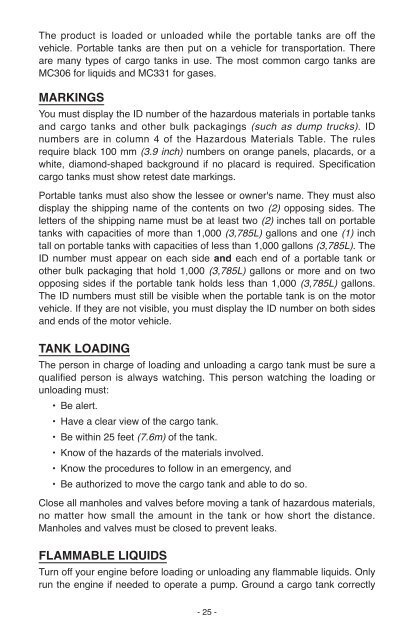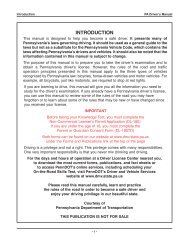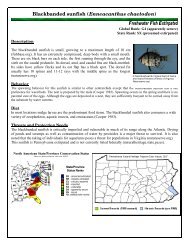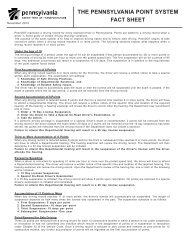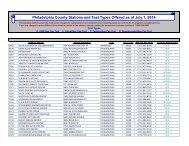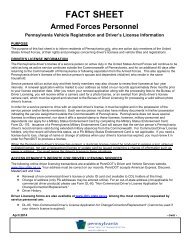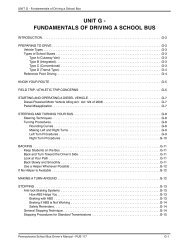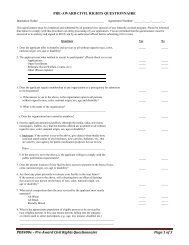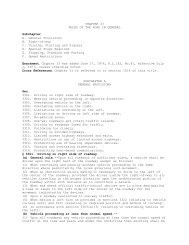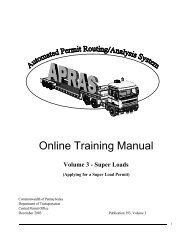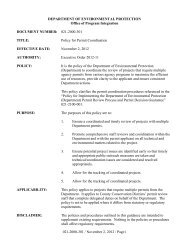PennDOT - Hazardous Materials Endorsement Renewal Manual
PennDOT - Hazardous Materials Endorsement Renewal Manual
PennDOT - Hazardous Materials Endorsement Renewal Manual
You also want an ePaper? Increase the reach of your titles
YUMPU automatically turns print PDFs into web optimized ePapers that Google loves.
The product is loaded or unloaded while the portable tanks are off the<br />
vehicle. Portable tanks are then put on a vehicle for transportation. There<br />
are many types of cargo tanks in use. The most common cargo tanks are<br />
MC306 for liquids and MC331 for gases.<br />
MARKINGS<br />
You must display the ID number of the hazardous materials in portable tanks<br />
and cargo tanks and other bulk packagings (such as dump trucks). ID<br />
numbers are in column 4 of the <strong>Hazardous</strong> <strong>Materials</strong> Table. The rules<br />
require black 100 mm (3.9 inch) numbers on orange panels, placards, or a<br />
white, diamond-shaped background if no placard is required. Specification<br />
cargo tanks must show retest date markings.<br />
Portable tanks must also show the lessee or owner's name. They must also<br />
display the shipping name of the contents on two (2) opposing sides. The<br />
letters of the shipping name must be at least two (2) inches tall on portable<br />
tanks with capacities of more than 1,000 (3,785L) gallons and one (1) inch<br />
tall on portable tanks with capacities of less than 1,000 gallons (3,785L). The<br />
ID number must appear on each side and each end of a portable tank or<br />
other bulk packaging that hold 1,000 (3,785L) gallons or more and on two<br />
opposing sides if the portable tank holds less than 1,000 (3,785L) gallons.<br />
The ID numbers must still be visible when the portable tank is on the motor<br />
vehicle. If they are not visible, you must display the ID number on both sides<br />
and ends of the motor vehicle.<br />
TANK LOADING<br />
The person in charge of loading and unloading a cargo tank must be sure a<br />
qualified person is always watching. This person watching the loading or<br />
unloading must:<br />
• Be alert.<br />
• Have a clear view of the cargo tank.<br />
• Be within 25 feet (7.6m) of the tank.<br />
• Know of the hazards of the materials involved.<br />
• Know the procedures to follow in an emergency, and<br />
• Be authorized to move the cargo tank and able to do so.<br />
Close all manholes and valves before moving a tank of hazardous materials,<br />
no matter how small the amount in the tank or how short the distance.<br />
Manholes and valves must be closed to prevent leaks.<br />
FLAMMABLE LIQUIDS<br />
Turn off your engine before loading or unloading any flammable liquids. Only<br />
run the engine if needed to operate a pump. Ground a cargo tank correctly<br />
- 25 -


